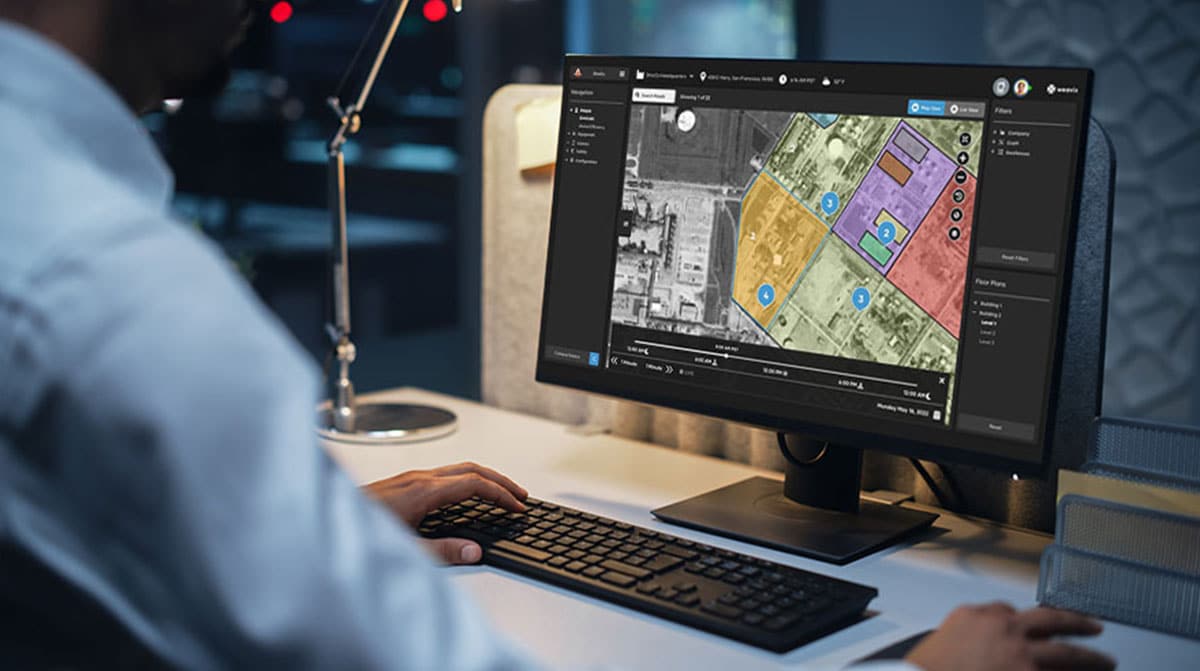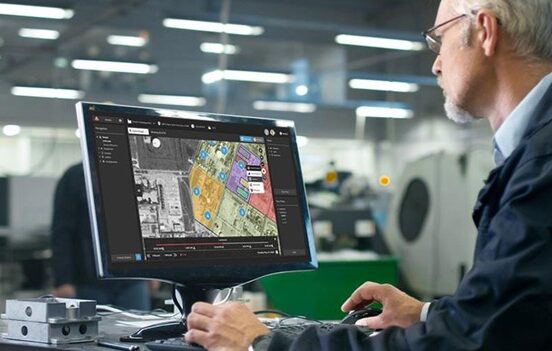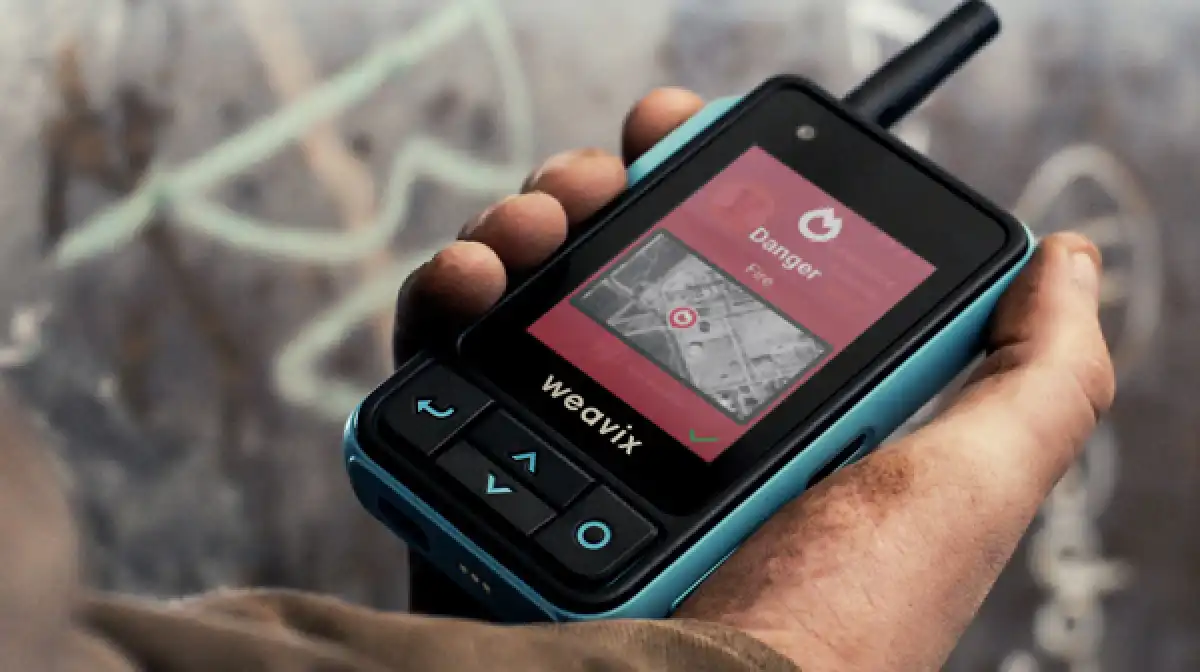Frontline teams in construction, energy, and manufacturing struggle to maintain real-time awareness of worker locations — and to enforce safety protocols — without causing unnecessary disruption. Even a brief lapse in situational awareness or a missed hazard alert can result in serious accidents or compliance failures.
A mission-critical geofencing system solves this by creating virtual perimeters and automating safety measures. It gives supervisors actionable insights, while frontline teams get immediate alerts as they move in or out of hazardous zones.
In this guide, you’ll learn how a geofencing system enhances frontline safety, from delivering real-time hazard alerts to supporting emergency mustering and accurate data tracking.
Key highlights:
- Automated safety zones alert supervisors and workers in real time, making geofencing systems essential for better frontline safety
- Real-time monitoring of personnel movement and mustering through a geofence tracker improves emergency response and accountability
- Geofencing devices enable accurate logs for audits and drive ongoing safety improvements across operations
- The Walt® Smart Radio System by weavix® delivers a digital safety net for frontline teams with mission-critical geofencing technology
What Is Mission-Critical Geofencing?
Mission-critical geofencing is a technology that establishes virtual boundaries around real-world geographic areas to manage and monitor the movement of workers, equipment, or assets within those zones. In safety-critical environments, this technology is used to trigger specific, immediate actions — such as sending alerts or restricting access — whenever a device or user enters or exits a physical location.
Industries like construction, energy, and manufacturing rely on mission-critical geofencing to prevent unauthorized entry into hazardous areas and to communicate potential dangers instantly. For example, if a worker enters a restricted zone without the required personal protective equipment (PPE), supervisors receive an alert, allowing rapid intervention and mitigating risk. This ensures compliance with safety protocols and reduces the chance of accidents.
A mission-critical geofencing system also helps with real-time asset management. By establishing virtual geographic boundaries, companies receive automatic mass notifications and alerts if equipment is moved beyond safe or approved zones, helping reduce theft and optimize resource allocation.
Integrating geofencing software into a frontline communication platform like the Walt® Smart Radio System by weavix® creates seamless communication between field devices and control centers, ensuring alerts are instantly addressed. Event logs generated by the system facilitate more effective and accurate safety audits, supporting continuous operational improvement.
>>>> Learn how the Walt Smart Radio System sets the standard for modern industrial communication.
The Importance of Geofencing Technology in Frontline Safety
Geofencing technology is important in frontline safety because it sets up a virtual geographic boundary around critical areas in real time. The technology enables continuous monitoring and management of both personnel and assets as required. For frontline operations, this means immediate hazard alerts, tighter enforcement of safety and compliance rules, and improved response during emergencies.
1. Enhanced hazard awareness
The National Safety Council reports that organizations using location-based safety technologies, including geofencing technology, can reduce worksite incidents by up to 40 percent, highlighting its effectiveness in hazardous environments. Integrating this with modern safety solutions ensures both compliance and protection in high-risk zones.
2. Improved incident response
In the oil and gas sector, integrating geofencing mustering systems has been shown to improve emergency evacuation response times by 20–30 percent, giving supervisors real-time visibility into who has reached muster points.
In manufacturing, the National Safety Council reports that applying geofencing technology around machinery and restricted zones can reduce serious injury risks by automatically alerting supervisors or shutting down equipment when unsafe movement is detected.
Growing adoption of location-based safety tools
According to Technavio research cited by NSC, the global market for geofencing technology is expected to grow at a compound annual growth rate of 22.35 percent from 2022 to 2027, driven largely by demand in transportation, logistics, and safety applications.
Enhanced hazard awareness
Improved incident response: In manufacturing and warehouse settings, deploying geofencing technology around high-risk equipment zones significantly enhances safety oversight.
According to Deloitte’s 2025 Smart Manufacturing Survey, companies implementing smart manufacturing initiatives — including real-time monitoring systems like geofencing — report 10–20 percent improvements in production output, 7–20 percent gains in employee productivity, and up to 15 percent unlocked capacity, all of which contribute to faster detection and prevention of safety incidents.
Improved compliance and safety protocols
During evacuations or drills, a geofencing app or device enables rapid mustering and instant tracking of personnel.
A simulation study in complex environments — such as hospitals or high-density facilities found in manufacturing or warehousing — found that using a real-time guidance system, including dynamic alerts, can reduce evacuation times by up to 72 percent compared to fixed signage. This underscores how geofencing technology, when integrated with real-time instructions, dramatically improves emergency accountability and speed.
Real-time emergency response
During evacuations or drills, a geofencing app or device enables rapid mustering and instant tracking of personnel.
Research highlighted by the National Institute of Standards and Technology shows that using real-time location systems for evacuation management can reduce accounting times for personnel by over 30 percent, giving supervisors immediate visibility into who is safe and who still needs assistance. This aligns with OSHA requirements for employers to account for all employees after an evacuation, which geofencing technology directly supports.
Operational efficiency and data insights
Beyond safety, geofencing supports decision-making by providing visibility into worker movements, equipment usage, and workflow bottlenecks. Utilities and field service operators rely on geofencing alerts to notify workers of nearby hazards and optimize resource allocation, reducing the chance of incidents and improving overall operational effectiveness.
Keep reading: Explore the benefits of workforce danger alert systems
Benefits of Geofencing Devices for Frontline Operations
The benefits of geofencing devices for frontline operations include:
- Boosted operational efficiency: Geofencing devices automate monitoring, greatly reducing manual check-ins. For instance, as a service vehicle arrives on-site, the system logs the event, improving time tracking and resource allocation.
- Stronger safety and compliance: Digital perimeters around hazardous zones help avert incidents. In the transportation sector, Geotab reported a 40 percent reduction in collision rates after implementing location-based monitoring, showing how geofencing technology improves worker safety while supporting compliance efforts.
- Real-time tracking and alerts: With a geofencing app or device, frontline managers get up-to-the-minute location data on crews, supporting better scheduling and faster decisions. When delays or incidents occur, alerts let staff manage expectations and quickly react.
- Reduced fuel and operating costs: A geofencing system enables route optimization and reduces idle time for fleets, translating to lower fuel consumption and operational expense. Managers can track vehicle movements across their coverage area and respond more quickly to new requests.
- Precise time and attendance logging: Automated logs of worker arrivals and departures prevent time fraud, reduce payroll errors, and make audits simpler.
Implementing geofencing devices into frontline operations not only increases efficiency, but also delivers powerful gains in safety and cost savings.
Keep reading: See how MillerKnoll uses weavix to drive safety and security worldwide
How Mission-Critical Geofence Systems Keep Workers Safe
Mission-critical geofencing systems keep workers safe by providing continuous monitoring, immediate warnings, and situational clarity in real time.
1. Eliminating distractions in hazardous environments
Automated safety features kick in as workers approach high-risk areas. For example, Walt’s geofence device with location tracking and digital dispatch tools uses global positioning systems (GPS) to make it easy to identify the closest personnel to an incident for faster response and to confirm evacuation compliance in real time..
2. Sending real-time geofence alerts
Geofencing devices with a tiered alerting system like Walt deliver the right level of warning when a worker nears or enters a dangerous area. Alerts for informational, warning, or danger situations prompt fast and appropriate decisions, increasing worker protection.
3. Tracking arrival at muster points
A geofence tracking device pinpoints who has safely reached muster points in emergencies. Technologies enable exceptionally quick, millimeter-accurate tracking, making evacuation and roll-call far more reliable for large or complex worksites.
4. Generating data logs for safety audits
Continuous location and event logging gives safety leaders a complete view of compliance and incident response. Geofencing software logs simplify post-incident analysis, enable process improvements, and help prove regulatory compliance.
These features ensure that every worker, everywhere, is kept visible, informed, and protected — all in real time.

Top Geofencing Use Cases in the Industry
Explore the top applications of geofencing across industries.
| Industry | Geofencing Use Case | How Geofencing Sytems Adds Value |
|---|---|---|
| Retail and E-Commerce | Location-based promotions | Sends targeted promotions to mobile devices near stores to drive foot traffic and sales |
| Logistics and Transportation | Fleet management and route optimization | Provides real-time adherence and alerts for off-route or unauthorized vehicle movement |
| Healthcare | Patient safety and asset management | Tracks patients in care and high-value equipment, sending alerts if leaving safe zones |
| Agriculture | Livestock monitoring and crop management | Notifies farmers when animals or assets leave predefined grazing or field areas |
| Construction | Equipment and worker safety management | Alerts managers if people or machines move out of work zones, minimizing accident risk |
| Human Resources | Automated time-logging and safety compliance | Logs time and triggers warnings for unauthorized personnel in hazardous zones |
| Event Management | Real-time attendee engagement | Delivers updates and personalized offers as attendees enter or leave event venues |
| Smart Cities | Traffic management and public safety | Monitors emergency teams and adjusts traffic flow to improve responses |
| Hospitality | Personalized guest services | Notifies guests of services and amenities as they arrive at hotels |
| Real Estate | Targeted advertising and access control | Sends promotions to potential buyers and limits unauthorized area access |
Geofencing’s adaptability across these sectors highlights its impact in boosting safety, efficiency, and engagement.
Give Your Frontline Workers the Best Industrial Geofencing Device
Equip your teams with advanced safety and reliable communication using the Walt Smart Radio System by weavix®. Built for challenging worksites, Walt provides more than just messaging — its mission-critical geofencing features keep workers visible, secured, and instantly informed.
The Walt Smart Radio System offers:
- Real-time geofence alerts to notify teams whenever workers approach, enter, or leave hazardous zones
- Accurate mustering and live location tracking for improved emergency roll calls and accountability
- Automatic, distraction-free safety adjustments as people move across worksites
- Comprehensive event and movement logs to support compliance and operational improvement
- Rugged, waterproof devices that connect teams anywhere, even with users on other devices
Upgrade to a proven geofencing system designed to reduce incidents, accelerate response, and improve frontline safety. For details about how geofencing can protect your people, contact us.
Frequently Asked Questions
What is geofencing?
Geofencing is a technology that creates a virtual boundary around a real-world location. When a device or user enters or exits this zone, this technology triggers automated actions — such as sending geofence alerts or logging movements. For instance, a retail store may use geofencing to notify customers about special offers as they enter the vicinity, driving more foot traffic and engagement.
How does geofencing work?
Geofencing works by using location data from GPS, Wi-Fi, RFID, or cellular networks to define a virtual perimeter. When enabled devices cross this perimeter, the geofencing software triggers actions based on predefined rules, like alerting supervisors or logging entry times.
GPS provides high accuracy but consumes more power, while Wi-Fi and private cellular data work well for less precise, energy-efficient applications.
What is a geofencing system?
A geofencing system combines hardware and software to manage virtual boundaries and react to movement in or out of those zones. These systems are core to communication solutions, supporting everything from asset tracking to safety and facility management — enabling quick, automated responses wherever staff or equipment moves.
What is the difference between GPS and geofencing?
The key difference is that GPS simply provides location data anywhere on Earth, while geofencing uses that GPS data to activate actions when a device enters or exits a designated perimeter. GPS is foundational for navigation, but geofencing builds on these coordinates to enforce safety, automate alerts, and track compliance. GPS is foundational for navigation, but geofencing builds on those coordinates to enforce safety rules, automate alerts, and track compliance.
What is an example of geofencing in the industry?
A common example is in retail. Stores deploy geofencing to send special offers to app users’ phones when they pass nearby, boosting visits and sales. In industrial settings, geofencing devices on work sites alert teams as people near hazardous areas — helping companies ensure safety and compliance.
What are the disadvantages of geofencing?
The main challenges of geofencing technology include:
- Privacy concerns: Using location data can raise privacy issues. Businesses must be transparent and obtain user consent to build trust.
- Battery drain: Constant GPS monitoring can quickly deplete mobile geofencing device batteries, prompting users to disable location services.
- Accuracy limitations: Signals in dense or indoor areas may reduce precision, causing false alarms or missed notifications in geofencing apps.
- Technical requirements: Some users may not have compatible devices or may turn off tracking features, reducing system effectiveness.
- Resource demands: Setting up and managing geofencing systems requires investment in both technology infrastructure and dedicated staff.



